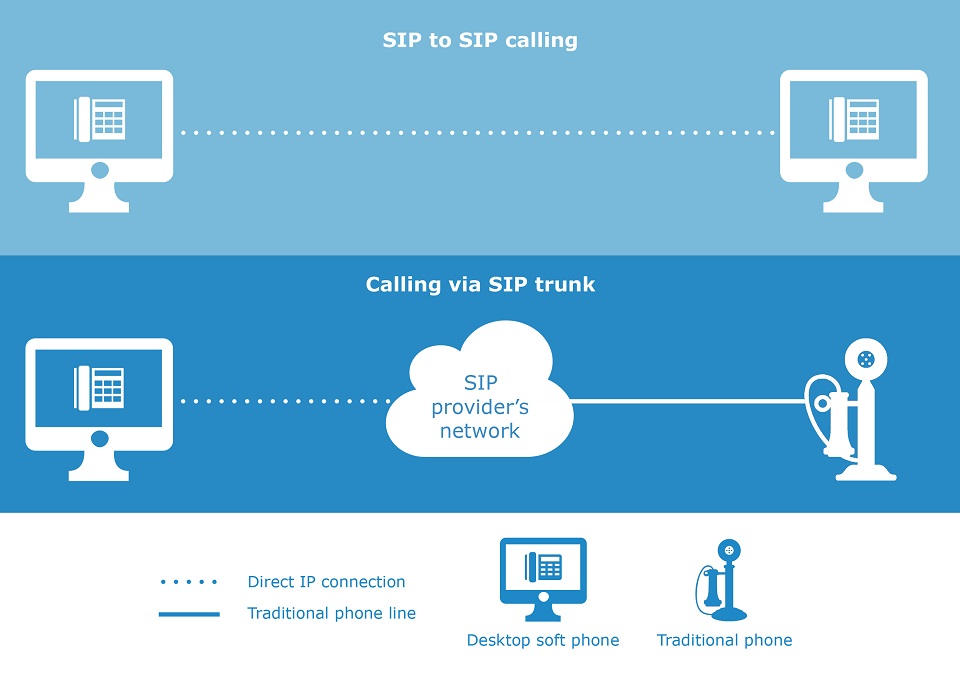For enterprises wanting to make full use of their installed IP-PBXs and not only communicate over IP within the enterprise, but also outside the enterprise a SIP trunk provided by an Internet Telephony Service Provider to connect to the traditional PSTN network is the solution. Unlike in traditional telephony, where bundles of physical wires were once delivered from the service provider to a business, a SIP trunk allows a company to replace these traditional fixed PSTN lines with PSTN connectivity via a SIP trunking service provider on the Internet. Learn More…
SIP trunks can offer significant cost-savings for enterprises, eliminating the need for local PSTN gateways, costly ISDN BRIs (Basic Rate Interfaces) or PRIs (Primary Rate Interfaces).
There are three components necessary to successfully deploy SIP trunks: a PBX with a SIP-enabled trunk side, an enterprise edge device understanding SIP and an Internet telephony or SIP trunking service provider.


THE PBX
In most cases the PBX is an IP-based PBX, communicating with all endpoints over IP, but it may just as well be a traditional digital or analog PBX. The sole requirement is that an interface for SIP trunking connectivity is available.
THE ENTERPRISE BORDER ELEMENT
The PBX on the LAN connects to the ITSP via the enterprise border element.The enterprise edge component can either be a firewall with complete support for SIP or an edge device connected to the firewall, handling the traversal of the SIP traffic.
THE ITSP
On the Internet, the ITSP (Internet Telephone Service Provider) provides connectivity to the PSTN (Public Switched Telephone Network) for communication with mobile and fixed phones.
